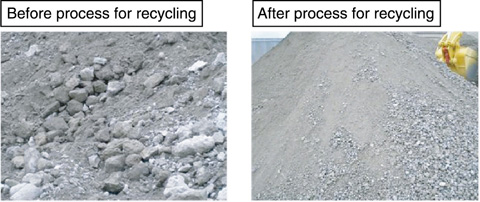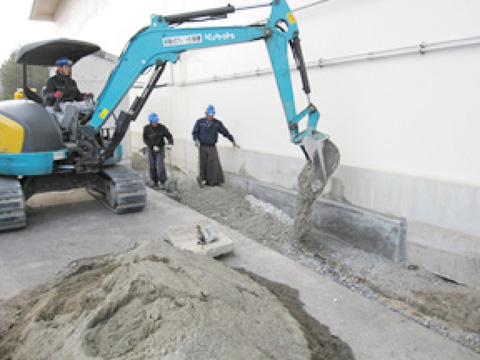
Fig.13-6 Flow of procedures to measure and evaluate radioactivity concentration

Fig.13-7 Processed concrete debris for recycling

Fig.13-8 Recycling of the concrete debris
We support effective utilization of materials through the clearance system. The purpose of the clearance system is to allow recycling of valuable materials generated from nuclear facilities so as to contribute to the establishment of a recycling-oriented society. The clearance system sets upper bounds on radioactivity concentration of materials, so that below those bounds the materials pose no radiation hazard to human health.
We have been storing about 4000 tons of very low-level radioactive concrete debris as radioactive wastes generated from the modification of JRR-3 between 1985 and 1990. At that time, the clearance system was not a part of our regulatory law. To recycle the debris, we conducted a preliminary survey of contamination levels, and then established procedures for measuring and evaluating the radioactivity concentration. These procedures include the selection of radionulides to be measured, choice of radioactivity measurement methods depending on characteristics of the debris, methods for evaluating the measured results, and management of the debris after measurement. In 2008, the government authorized our procedures for clearance.
Since FY 2009, we have measured and evaluated the radioactivity concentration of concrete debris, using the government-authorized procedures. By the end of FY 2011, the government had confirmed the correctness of our measurements and evaluation results on about 1900 tons of concrete debris (Fig.13-6).
We processed the concrete debris that was approved by the government for recycling, and then the Ibaraki Construction Technology Center verified that the debris met the quality requirements in RC40; this required the debris to pass sieve tests, abrasion tests, and foreign matter contamination tests (Fig.13-7).
By the end of FY 2011, we had reused about 600 tons of concrete debris as backfilling material in depressed areas around buildings in the Nuclear Research Institute. Those depressed areas were caused by the Great East Japan Earthquake on March 11, 2011 (Fig.13-8).
This is the first Japanese case of recycling cleared concrete debris. It is expected that our procedures will contribute to future decommissioning of nuclear facilities in a reasonable way and will promote formation of a recycling-oriented society.